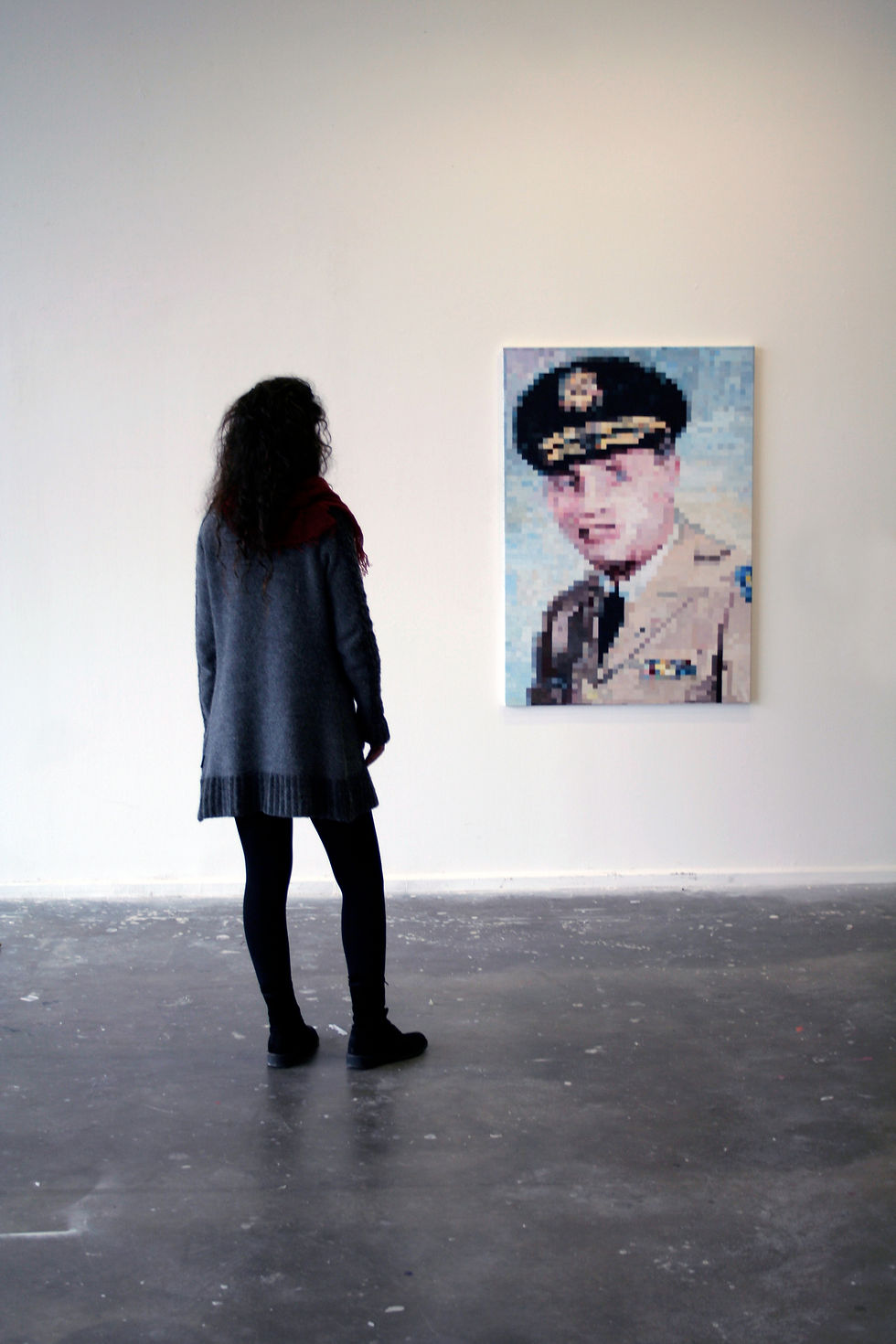Works
Portrait d'un aumônier militaire


vue accrochage

acrylique sur toile - 81x116 cm - 2012
Parler de ce portrait est pour moi à faire en deux temps. Tout d’abord le choix de la pixellisation de l’image, puis de l’identité peinte dans ce portrait.
Tout comme Chuck Close je ne singe pas le pixel. Dans ce portrait les pixels ne sont pas monochromiques et ne sont pas carrés. La pixellisation démembre l’image et chacune de ses parcelles devient une unité de couleur sans nuance. La peinture permet alors de rendre à chacune de ces parcelles ses nuances. Le pixel impose aussi une distance physique face à l’image. Pour la comprendre, on doit s’en éloigner.
Cette distance imposée est en lien avec l’identité peinte, à savoir celle d’un aumônier militaire. Le Père Georges Zabelka, fut le prêtre aumônier catholique qui a béni les aviateurs d’Enola Gay. C’est en lisant les écrits de Théodore Monod (scientifique français) que j’ai découvert l’existence de cet homme, qui serait devenu l’ombre de lui-même. Mon propos ici n’est pas un jugement de valeur mais plutôt une réflexion sur le rôle politique que peut avoir une institution religieuse.
La peinture ici est un acte de mémoire, peindre un personnage historique lié à une histoire révolue est une façon de dire “ on ne doit pas oublier “. La notion de mémoire collective est importante ici.
Portrait of a military chaplain - acrylic paint on canvas - 116x81cm
2012
I would discuss this portrait in two facets. Firstly the choice of pixelisation of the image and secondly the identity of the subject.
As Chuck Close I do not imitate the pixel as monochromatic and perfectely square. The pixelisation process dismembers the picture and each plot is a color unit without nuance. Here the paint gives each plot back its nuances. I also choose the pixel form because it imposes a physical distance to the viewer. To understand a pixelled picture, we must move away from it.
This imposed distance is linked with the identity of the subject, namely that of a military chaplain. Father Georges Zabelka was the Catholic chaplain priest who blessed Enola Gay’s airmen. I discovered his existence reading the writings of the French scientist Theodore Monod.
My purpose here is not to pass personal judgement on the subject but to illustrate the political involvement played by the religious instutions in this and other cases.
Here the painting serves as a memorial to collectively remind us of a specific historical figure and to encourage us not to forget his role and the significant role played by the religious institutions in our History.